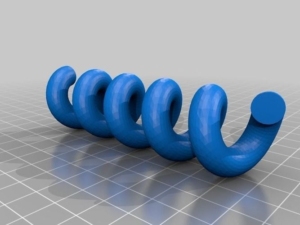
Afro-textured hair is found only in certain populations in Africa and the African diaspora. Each strand of hair grows in a tiny, angle-like helix shape like the image at left. This is why it grows up and out rather than down and can make gravity-defying shapes with afros and puffs.
There are many things to celebrate about this hair texture. Here are a few below:
Celebrate Traditional African Judgements of Hair
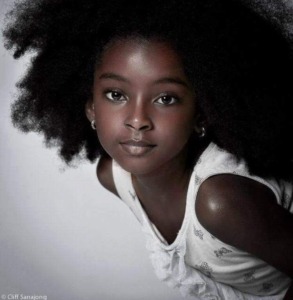 Traditional African judgments on hair refer to its quantity and volume.
Traditional African judgments on hair refer to its quantity and volume.
In ancient Yoruba culture, beautiful hair was celebrated as kpotongo, which means “It is abundant, plentiful, long and thick” or papoongo which means indicates thick growth and luxuriance.
Undesirable hair was called kpendengo, which means hair that is stunted, not growing robustly.
“A woman’s plaited hair is her beauty” – Yoruba proverb
In ancient African cultures, it was believed that both elegance and beauty were conferred on a woman by plaiting her hair into beautiful and complicated styles and the same is true today.
Read details on the history of afro-textured hair in Emma Dabiri’s book: Twisted: The Tangled History of Black Hair Culture: Dabiri, Emma: 9780062966728: Amazon.com: Books
Celebrate the Origins of African Braided Hairstyles
“Braids are not just a style. It’s an ancient artform”
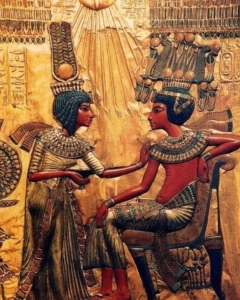 Braiding originated more than 5,500 years ago. In many African tribes, braided hairstyles were a unique way to identify each tribe. Braid patterns and hairstyles were an indication of a person’s tribe, age, marital status, wealth, occupation, power, and religion.
Braiding originated more than 5,500 years ago. In many African tribes, braided hairstyles were a unique way to identify each tribe. Braid patterns and hairstyles were an indication of a person’s tribe, age, marital status, wealth, occupation, power, and religion.
Hairstyles were used to mark important life stages, such as the transition from one status to another, such as puberty or initiation into societies. Hairstyles were an integral part of rituals, constituting a visual form of language in oral societies.
Braiding was and is a social art. Because of the amount of time it can take, people often would take the time to socialize. It began with the elders braiding each other’s hair and then their children’s hair, while the children watched and learned.
Younger children would start practicing on each other and eventually learn the traditional styles. This tradition of bonding was carried on for generations and quickly made its way across the world.
Celebrate the Uniqueness of Afro-Textured hair
“My skin absorbs the sun’s rays and my hair defies gravity. You can’t tell me I’m not magical” – Nyakim Gatwech, Sudanese model.
Afro-textured hair is a physical marker that distinguishes people of African descent from every other ethnic group. Having a unique hair texture that sets you apart and can be styled in so many beautiful ways is something to be thrilled about!
Celebrate the Benefits of Afro-Textured Hair
Cool and Airy
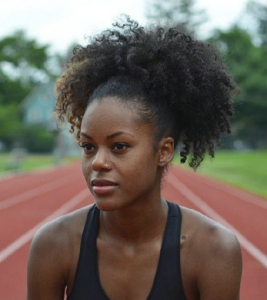 The sparse density of afro-textured hair, combined with its elastic helix shape, increases the circulation of cool air to the scalp and helps regulate body temperature. In addition, the dryness of afro-textured hair makes it remain springy, regardless of the weather.
The sparse density of afro-textured hair, combined with its elastic helix shape, increases the circulation of cool air to the scalp and helps regulate body temperature. In addition, the dryness of afro-textured hair makes it remain springy, regardless of the weather.
On the other hand, hair with a straighter texture easily becomes drenched in sweat, causing it to stick to the neck and forehead, which makes a person feel hot and uncomfortable.
With afro-textured hair, no matter how hot the weather is or how vigorously we exert ourselves physically, our hair texture keeps our heads cool.
Limitless Styling Options
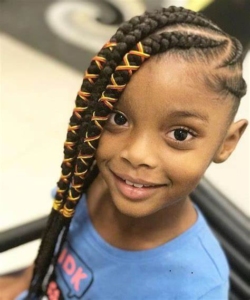
Afro-textured hair is incredibly versatile and can be manipulated into a variety of styles and shapes. When you add in the possibilities of embellishing a hairstyle with beads, ribbons, clips and other decorations, your styling options are as unlimited as your imagination.
In black culture, the frequent and radical transformation of your hairstyle is typical. You can therefore consider your hair as a canvas on which amazing works of art can be created!
Braids are Always in Style
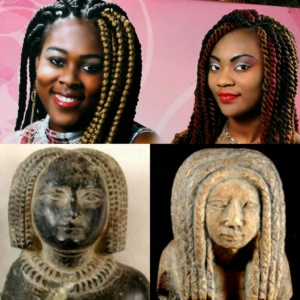
Although braided hairstyles are more than 5,500 years old, they always look stylish and current. The image at left shows images of braided hairstyles thousands of years ago compared to modern braided hairstyles. Although the styles have not changed at all, they still have a modern, fresh look.
It’s incredible that such an ancient artform is still seen in the twenty-first century as new, fresh and edgy!
Enhanced Bonding and Friendship
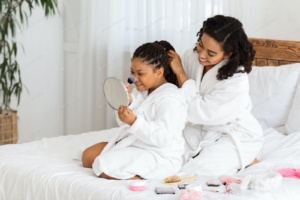 In ancient Africa, offering to plait another woman’s hair was seen as an invitation to friendship, a gift of love and a concrete contribution of one woman to the success of another.
In ancient Africa, offering to plait another woman’s hair was seen as an invitation to friendship, a gift of love and a concrete contribution of one woman to the success of another.
It was a way of saying: “I like you. I appreciate you. I want you to look beautiful”.
Because of the length of time it takes to style afro-textured hair and the close proximity required to do so, it is an ideal opportunity for women and girls to bond with each other and form close relationships. This is the reason many women form close friendships with their stylists.
Mothers can enjoy the physical closeness during the time spent styling their daughters’ hair to connect, talk about life and share their values, ideals and dreams.
Low maintenance
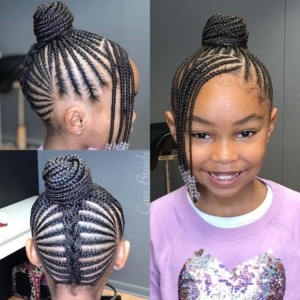 Manipulating hair into an intricate hairstyle can take several hours. However, once a style is put into place, it can be kept that way for days or even weeks.
Manipulating hair into an intricate hairstyle can take several hours. However, once a style is put into place, it can be kept that way for days or even weeks.
Teach this to your Children
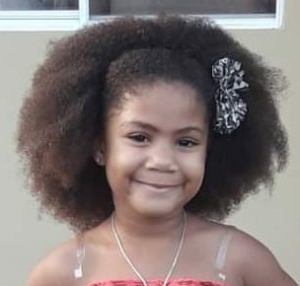
As you have seen, there are many things to celebrate about afro-textured hair and you need to be intentional about sharing this with your children, especially your daughters.
Encourage them to love their hair exactly the way it grows out of their heads by buying them books that specifically celebrate their hair texture.
Such books can be found at the following link Celebrate Afro-Textured Hair – My Reflection Children’s Store (myreflectiontt.com).
About Us
My Reflection Children’s Bookstore provides children’s books with African and Indian main characters to promote self-love and a love for reading among children.
Shop online at www.myreflectiontt.com for delivery to any address in Trinidad & Tobago.
Keep in touch with us by joining our newsletter and by following us on Facebook and Instagram
- www.instagram.com/myreflectiontt
- www.facebook.com/myreflectiontt

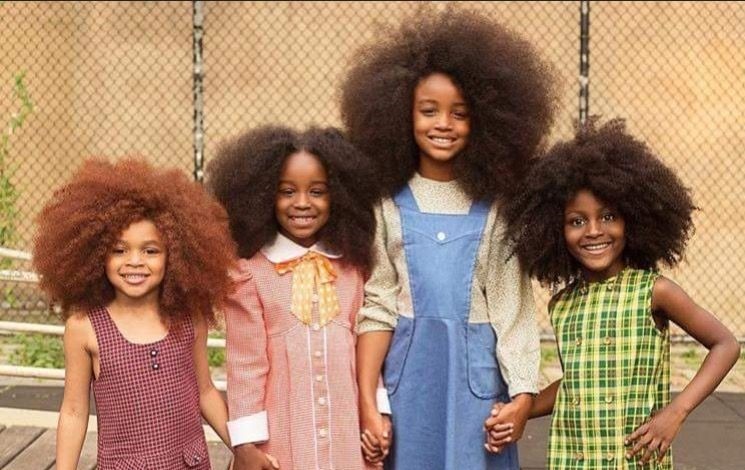
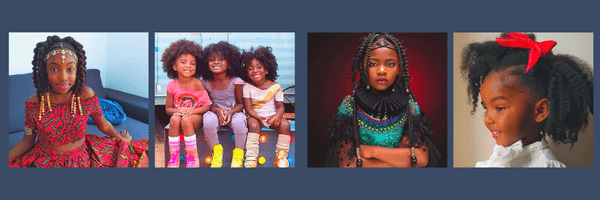
1 Comment
Comments are closed.